Enemies of Timber
Wood-boring Insects
Common Furniture Beetle (Anobium punctatum)
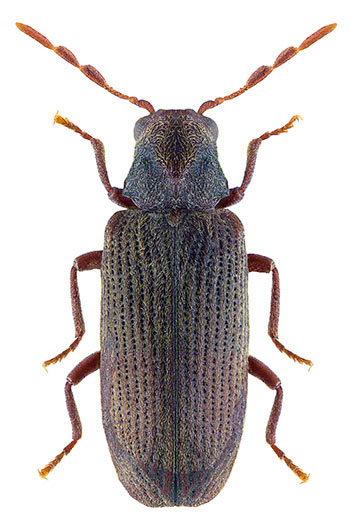
This wood-boring insect can damage both softwoods and hardwoods. The larvae of the beetle bore through the wood digesting the cellulose. After about three years they form a pupal chamber near the surface and there change into adult beetles.
In the summer they bite their way out to the surface, forming the characteristic round flight holes 1.5mm in diameter. After mating, the females lay their eggs (up to 80) in cracks, crevices or old flight holes. The eggs hatch and a new generation begins a fresh life cycle. The life cycle can be as short as three years in damp timber predigested by a wood rotting fungus.
Death Watch Beetle (Xestobium rufovillosum)
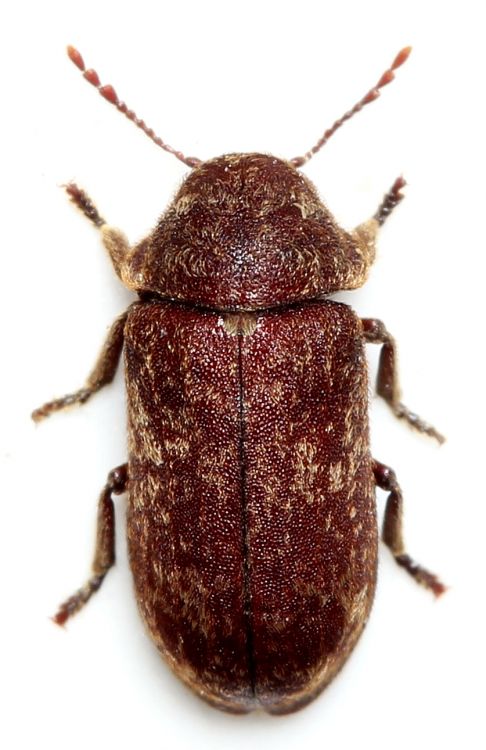
This wood-boring insect is related to the Common Furniture Beetle, but is much larger. Its flight hole is large and round (3mm diameter) and its bore dust is coarse and bun shaped. The larvae of this beetle are usually found in decaying oak, and the life cycle from egg to adult can be as short as four years. In dry, sound wood the larvae may tunnel for up to twelve years before pupating. As with most other wood-boring insects, it is the larva, feeding on the timber which do all the damage.
Eventually the larvae pupate and turn into beetles, which emerge from the wood, mate, and the cycle starts again. The female lays up to 200 eggs. Whilst generally attacking hardwoods only, this wood boring insect has been known to feed upon decaying softwood timbers. The well known tapping, caused by the head of the beetle, is a mating call during the flight season (typically March-June). This insect is often found in churches hence the association with death reflected in its name.
Wood-boring weevil (Euophryum confine)
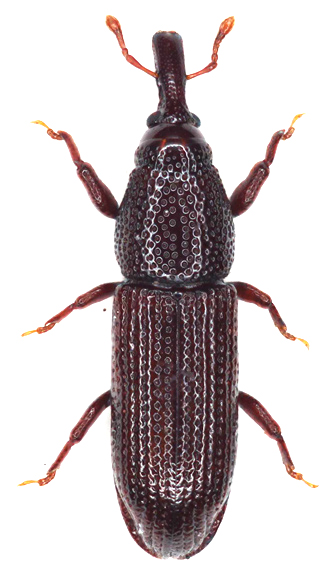
This is a wood-boring insect somewhat similar in appearance and size to the Common Furniture Beetle. There are over 50,000 species of Weevil and all have long snouts. It also differs in that it will only attack timber which is already decayed by wood rotting fungi. Weevils are prolific and is known to have up to two complete life cycles in one year. Its presence may therefore be accompanied by serious structural collapse of timber due to fungal decay.
Weevils prefer sappy early wood where both adult and larvae tunnel, forming slot like galleries in the timber and irregular flight holes on the surface of about 1.5mm wide.
House Longhorn Beetle (Hylotrupes bajulus)
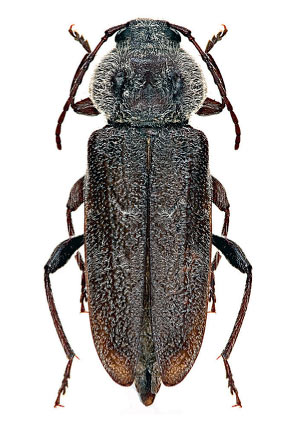
This wood destroying insect attacks seasoned softwoods laying its eggs in the cracks and crevices of wood. The eggs hatch out within about three weeks into larvae.
The larvae tunnel through the wood and can eat their own length each day. Since near maturity they are about 25mm long, the damage caused by these insects can be enormous. After tunnelling for some four to seven years, the adult beetle emerges from the wood during the mating season, leaving the characteristic oval flight hole which may be up to 10mm long and 6mm wide. After mating, one beetle can lay as many as 200 eggs. In Great Britain this insect is found mainly in Surrey and Hampshire.
Termites
Commonly but erroneously called 'white ants' termites are the most destructive of wood-boring insects. They do not occur in the United Kingdom but are widespread throughout the Tropics, the United States, Australasia and to a lesser extent Continental Europe. In addition to timber some species also attack standing trees, food crops and many other materials including plastics and rubber. Broadly speaking, they fall into two main groups:
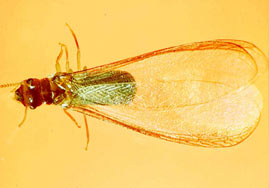
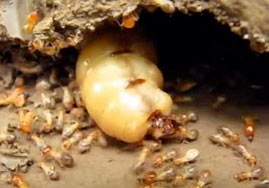
Dry wood Termites (Kalotermitidae)
These work entirely within the wood and often remain undetected until serious damage occurs. Attack is initiated by the flying adults laying their eggs in cracks or joints in woodwork, furniture, etc. These insects are mainly confined to coastal regions.
Subterranean Termites
These are more widely distributed and live in colonies in the ground. They construct mud tunnels which protect the workers foraging for food from predators and desiccation.
These mud tunnels are a sure indication of termite infestations. The three most common groups of subterranean termites are the dampwood termites (Termopsidae), moist wood termites (Rhinotermitidae), and ground dwelling termites (Termitidae).
Fungi
Cellar fungus (Coniophora puteana)
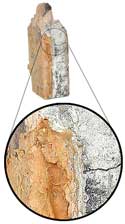
Fungal AttackCellar Fungus is one of the wet rot fungi, which feed on damp timber, causing the wood to lose weight and strength and ultimately collapse. Wet Rot fungi require more moisture than the Dry Rot fungus. Unlike Serpula lacrymans this fungus does not form a fleshy fruit body but a thin, olive green, flat sporophore. Characteristic dark brown strands develop on the timber surface. It is often found in cellars or wherever persistent dampness is present.
Pore fungus (Fibroporia vaillantii)
This is another of the wet rot fungi which feed on damp softwood, causing its ultimate collapse. It tolerates more extreme temperature conditions than the Dry Rot fungus. Its mycelium is usually formed in fan shaped formations over the surface of the timber and is snow white in colour. Its fructifications and spores are likewise light in colour. It is a common fungus in coal mines but is also found in damp buildings.
Dry rot (Serpula lacrymans)

Poria Fungal AttackThis fungus requires moist, warm, windstill conditions for its growth and untreated timber at a moisture content above 22%. The cellulose which it attacks is broken down to carbon dioxide and water, causing the timber to lose strength, to develop cuboidal splitting and become dry and powdery hence the name Dry Rot.
The strands or hyphae of the fungus produce enzymes which digest adjacent damp timber. Strands may penetrate through brickwork, following the line of damp, in search of further timber to attack.
Under ideal growing conditions the fungus can fructify within a year producing a fleshy fruit body from which millions of rust red spores are discharged.
